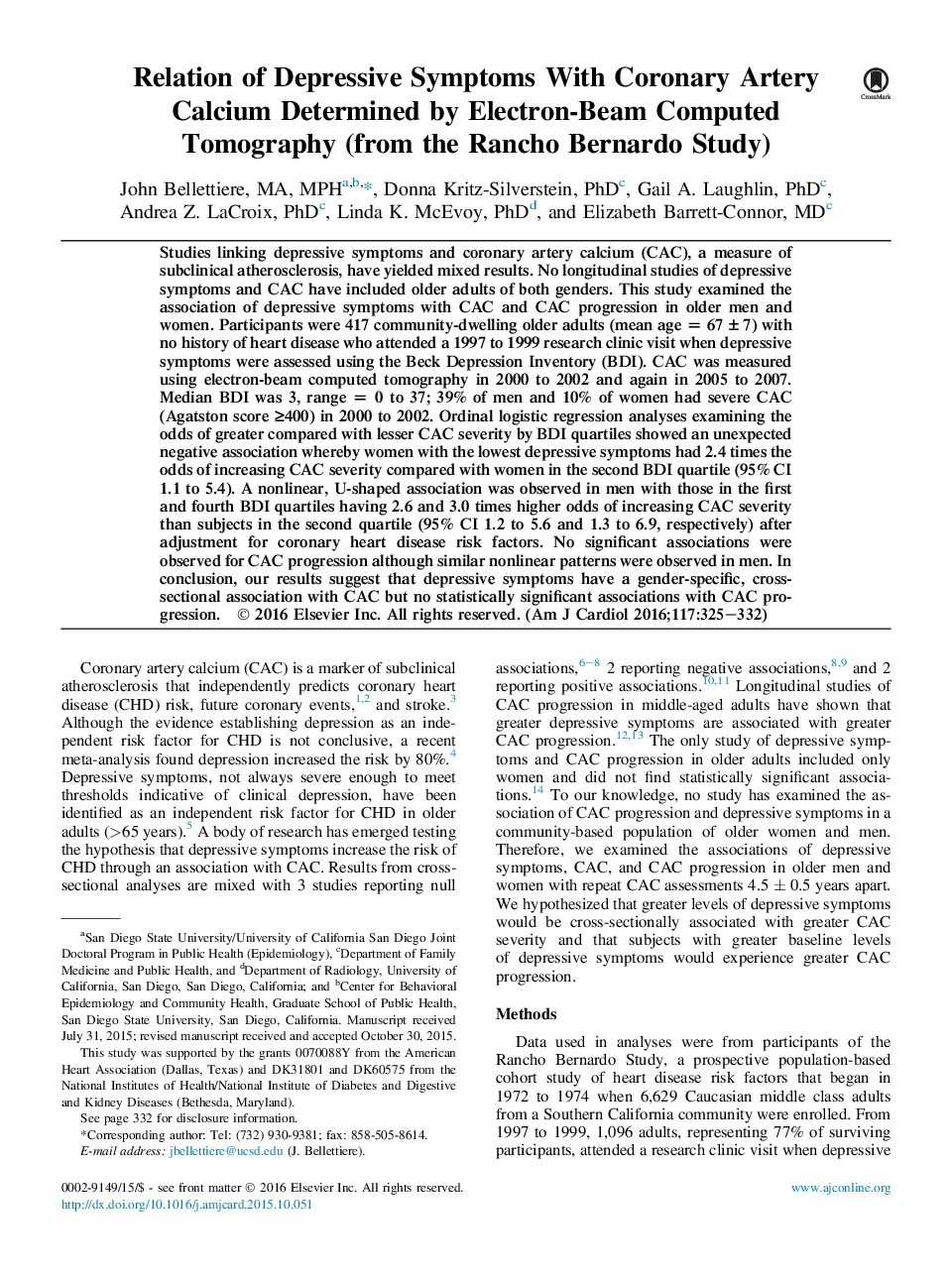| Article ID | Journal | Published Year | Pages | File Type |
|---|---|---|---|---|
| 2853224 | The American Journal of Cardiology | 2016 | 8 Pages |
Studies linking depressive symptoms and coronary artery calcium (CAC), a measure of subclinical atherosclerosis, have yielded mixed results. No longitudinal studies of depressive symptoms and CAC have included older adults of both genders. This study examined the association of depressive symptoms with CAC and CAC progression in older men and women. Participants were 417 community-dwelling older adults (mean age = 67 ± 7) with no history of heart disease who attended a 1997 to 1999 research clinic visit when depressive symptoms were assessed using the Beck Depression Inventory (BDI). CAC was measured using electron-beam computed tomography in 2000 to 2002 and again in 2005 to 2007. Median BDI was 3, range = 0 to 37; 39% of men and 10% of women had severe CAC (Agatston score ≥400) in 2000 to 2002. Ordinal logistic regression analyses examining the odds of greater compared with lesser CAC severity by BDI quartiles showed an unexpected negative association whereby women with the lowest depressive symptoms had 2.4 times the odds of increasing CAC severity compared with women in the second BDI quartile (95% CI 1.1 to 5.4). A nonlinear, U-shaped association was observed in men with those in the first and fourth BDI quartiles having 2.6 and 3.0 times higher odds of increasing CAC severity than subjects in the second quartile (95% CI 1.2 to 5.6 and 1.3 to 6.9, respectively) after adjustment for coronary heart disease risk factors. No significant associations were observed for CAC progression although similar nonlinear patterns were observed in men. In conclusion, our results suggest that depressive symptoms have a gender-specific, cross-sectional association with CAC but no statistically significant associations with CAC progression.
